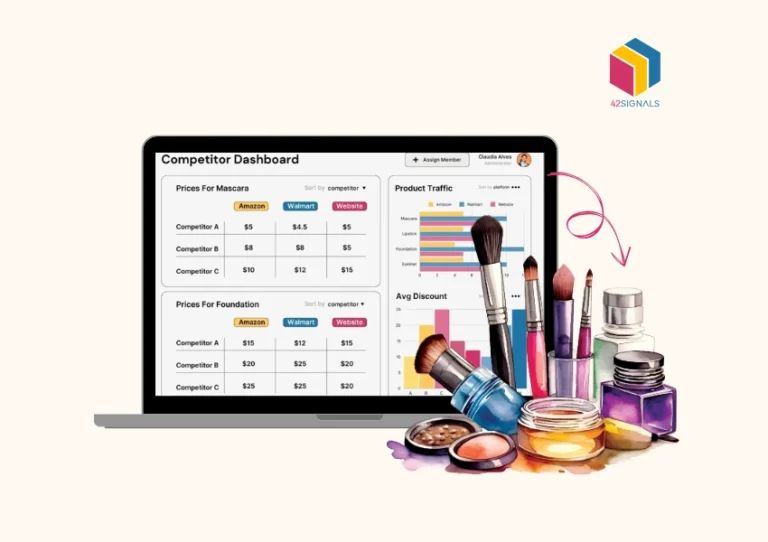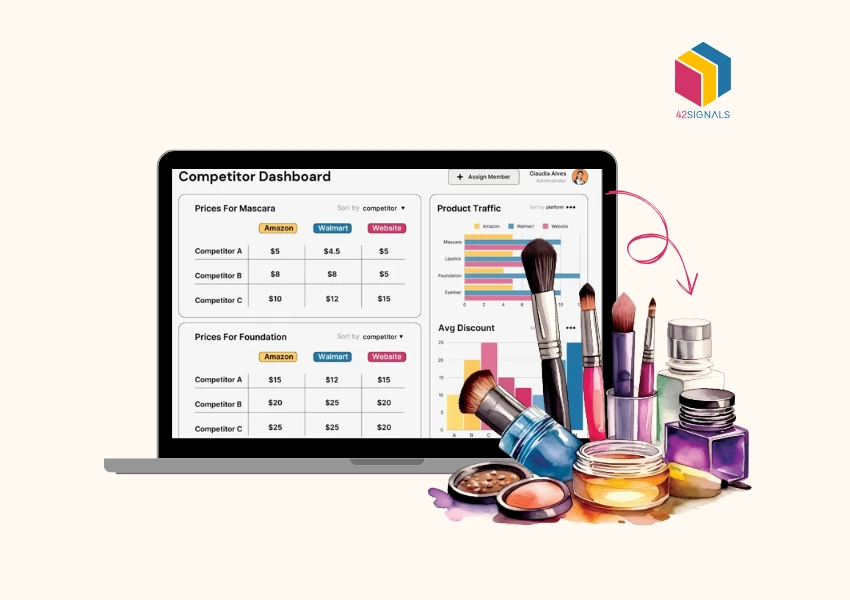In the fast-paced world of e-commerce, staying ahead of the competition is vital for success. With countless businesses vying for customers’ attention, it becomes crucial to gain insights into your competitors’ strategies, strengths, and weaknesses. This is where competitive analysis comes into play. By harnessing the power of e-commerce analytics, you can unlock valuable data that will inform your competitive analysis and enable you to make informed decisions to gain a competitive edge.
In this comprehensive guide, we will walk you through the process of conducting an effective competitive analysis. We’ll explore various aspects of analysis, including defining your competitors and objectives, gathering relevant data, and analyzing your competitors’ websites, social media presence, SEO and advertising strategies, pricing, and promotions.
Let’s dive in and explore the world of competitive analysis in e-commerce and how e-commerce analytics can be your powerful ally in this journey.
Importance of Competitive Analysis in Ecommerce
Competitive analysis allows you to gather valuable insights into the strategies, strengths, and weaknesses of your competitors. By analyzing and benchmarking your business against others in your industry, you can identify opportunities for improvement, develop effective marketing and differentiation strategies, and make informed decisions to stay ahead of the competition.
Here are some key reasons why competitive analysis is essential in the realm of e-commerce:
1. Identifying Industry Trends and Best Practices
Analyzing your competitors provides valuable insights into the latest industry trends and best practices. By studying their strategies and tactics, you can identify emerging trends, new technologies, and innovative approaches to stay relevant and maintain a competitive edge.
2. Understanding Customer Expectations
Competitive analysis helps you understand customer expectations and preferences within your industry. By examining your competitors’ offerings, customer reviews, and feedback, you can gain a deeper understanding of what customers value, what pain points they experience, and how you can tailor your products, services, and user experience to meet their needs more effectively.
3. Assessing Competitive Positioning
Analyzing your competitors allows you to assess your own positioning within the market. By comparing factors such as pricing, product features, quality, customer service, and brand reputation, you can determine how you stack up against your competitors. This assessment helps you identify areas where you excel and areas where you need to improve to gain a competitive advantage.
4. Spotting Opportunities and Threats
Competitive analysis helps you identify both opportunities and potential threats within your industry. By monitoring your competitors’ activities, such as new product launches, marketing campaigns, partnerships, or expansion plans, you can proactively respond to market changes and capitalize on untapped opportunities or mitigate potential risks.
5. Enhancing Product and Service Offerings
Studying your competitors’ offerings allows you to gain insights into their product or service features, pricing strategies, and customer satisfaction levels. This information enables you to refine and enhance your own product or service offerings, differentiating yourself by addressing any gaps or shortcomings identified in the market.
6. Optimizing Marketing and Advertising Strategies
Competitive analysis helps you optimize your marketing and advertising strategies by understanding how your competitors engage with their target audience. By examining their content marketing efforts, social media presence, SEO strategies, and advertising campaigns, you can gain inspiration, identify effective channels, and differentiate your messaging to better resonate with your target customers.
Getting Data for Competitive Analysis
Once you understand the importance of competitive analysis in e-commerce, the next step is to gather relevant data to fuel your analysis. Gathering comprehensive and accurate data will provide you with the foundation for making informed decisions and developing effective strategies. Here are some key steps to consider when gathering data for your competitive analysis:
1. Identify Key Competitors
Start by identifying your direct and indirect competitors. Direct competitors are those who offer similar products or services to the same target audience, while indirect competitors may provide alternative solutions to your customers. Make a list of these competitors to focus your data-gathering efforts.
2. Utilize E-commerce Analytics Tools
Leverage e-commerce analytics tools to gather valuable data about your competitors. These tools can provide insights into various aspects, customer behavior, and more.
3. Monitor Social Media and Online Presence
Keep a close eye on your competitors’ social media channels, including Facebook, Instagram, Twitter, and LinkedIn. Observe their content strategies, engagement with customers, and overall brand messaging. Additionally, monitor online review platforms and forums to gather customer feedback and sentiment about your competitors’ products or services.
4. Evaluate Pricing and Promotions
Study your competitors’ pricing strategies, including their regular pricing, discounts, and promotions. Monitor changes in their pricing over time to understand their pricing elasticity and how they respond to market conditions. Identify any promotional activities, such as limited-time offers, coupon codes, or loyalty programs. This will help you gain insights into their pricing and promotional tactics.
5. Leverage Publicly Available Data
Explore publicly available data sources, such as industry reports, market research studies, and government publications. These sources can provide valuable information about market trends, industry benchmarks, and customer behavior. Analyze this data in conjunction with your competitors’ data to gain a holistic view of the market landscape.
In Summary
Conducting an effective competitive analysis is an essential step for e-commerce businesses looking to thrive in a highly competitive marketplace. By leveraging the power of e-commerce analytics tools, you can gather valuable data and insights that inform your decision-making and drive strategic planning.
A thorough competitive analysis allows you to understand industry trends, customer expectations, and your own competitive positioning. It helps you identify opportunities for improvement, refine your product offerings, optimize marketing strategies, and make informed decisions to gain a competitive edge. By monitoring your competitors’ pricing, product assortment, user experience, SEO strategies, social media presence, and customer sentiment, you can benchmark your own business and uncover areas for growth and differentiation.
Remember, competitive analysis is an ongoing process that requires continuous monitoring and adaptation. The e-commerce landscape is dynamic, and competitors’ strategies evolve over time. Regularly updating your analysis and staying up-to-date with market trends and customer preferences is vital to maintaining your competitive advantage.
By embracing a data-driven approach and utilizing e-commerce analytics tools effectively, you can position your business for sustained success. Competitive analysis provides you with the insights necessary to refine your strategies, optimize your operations, and deliver exceptional customer experiences.







